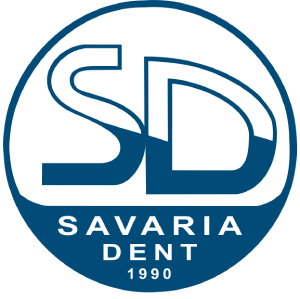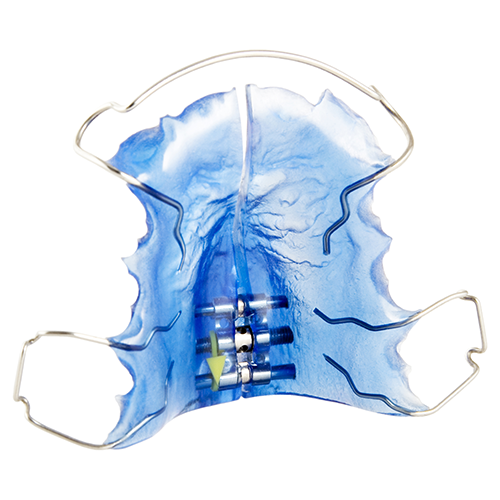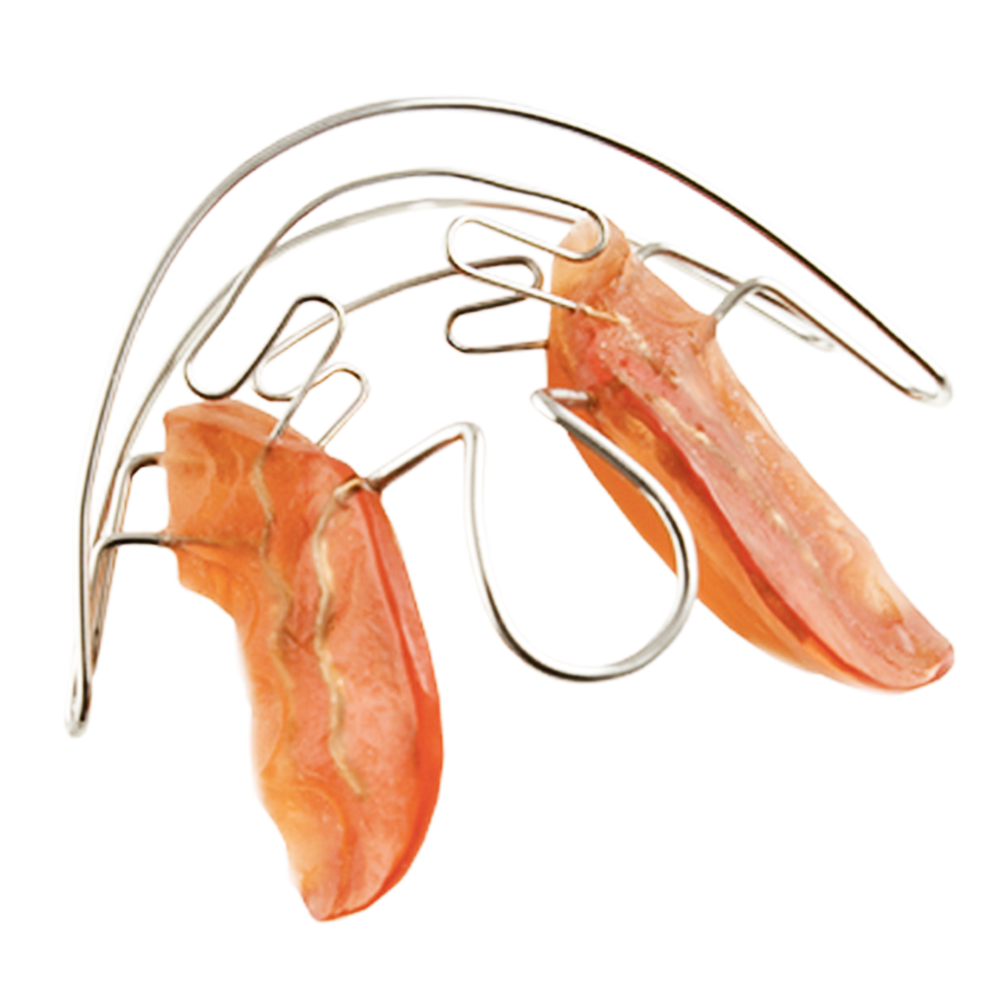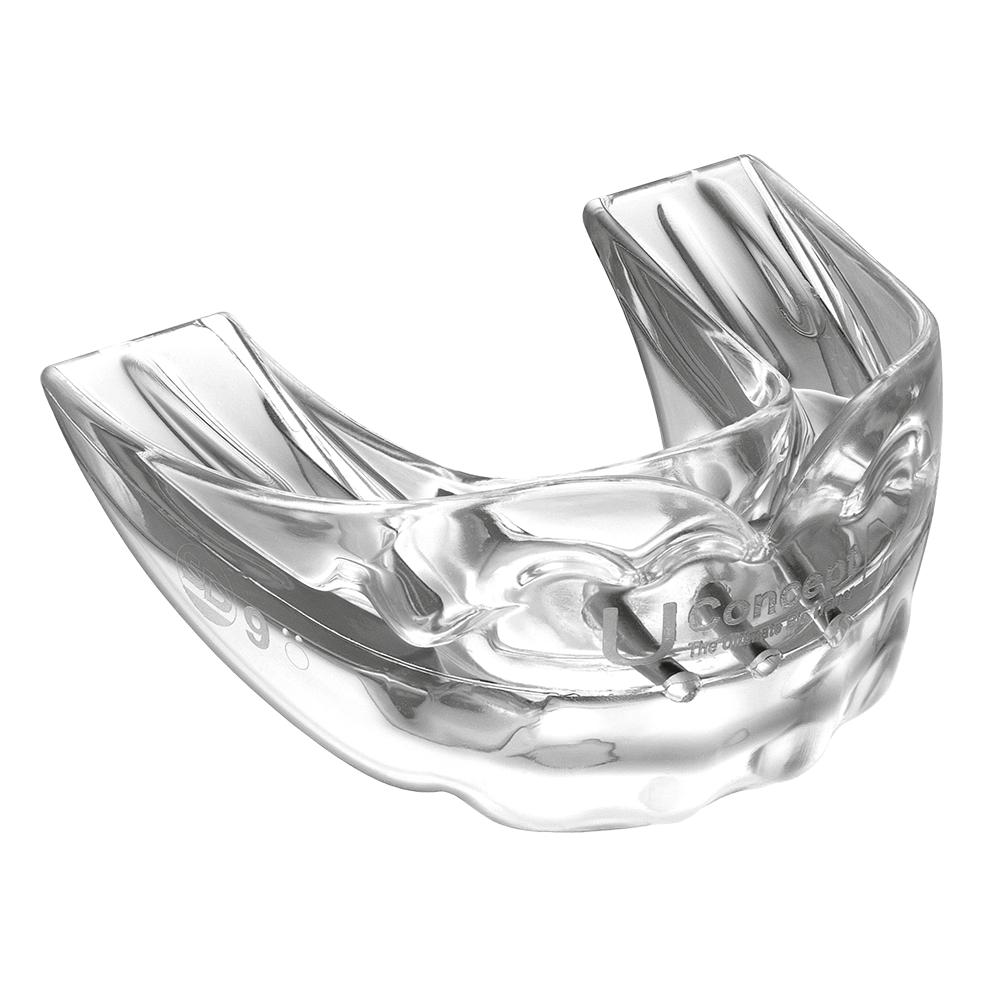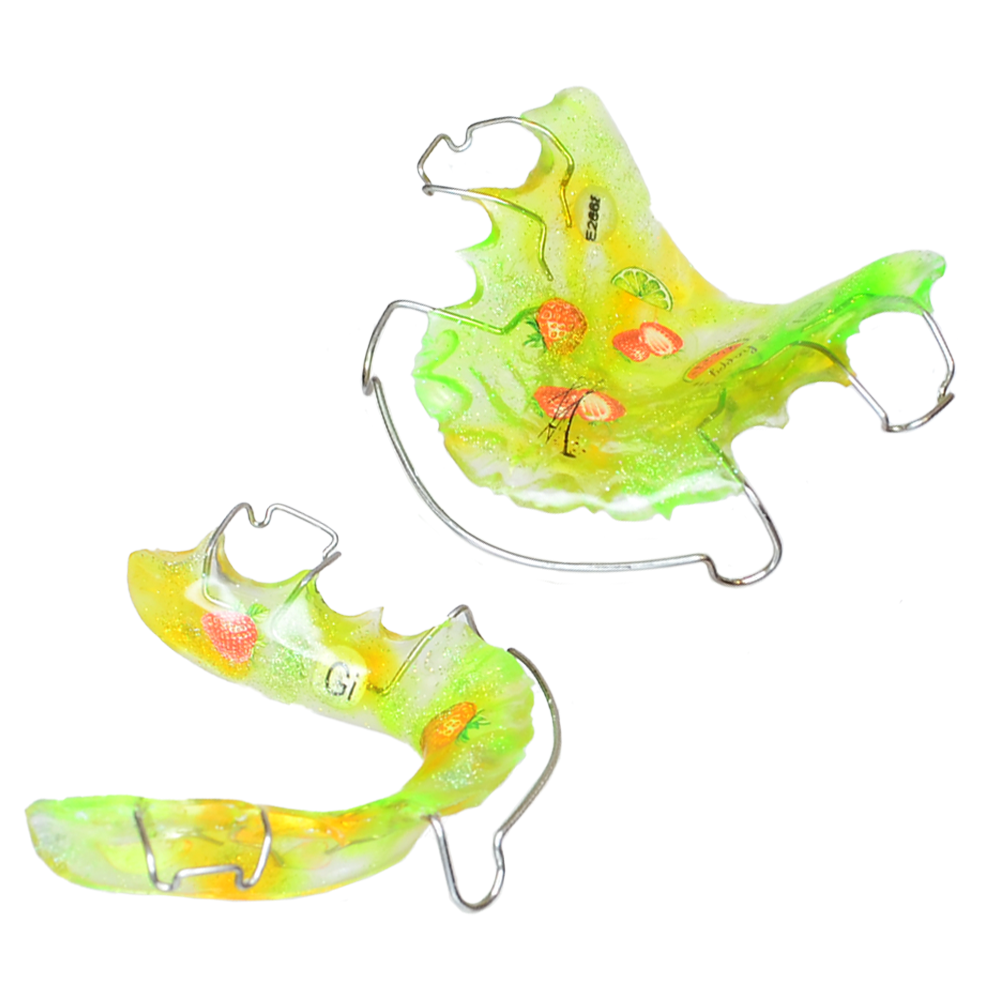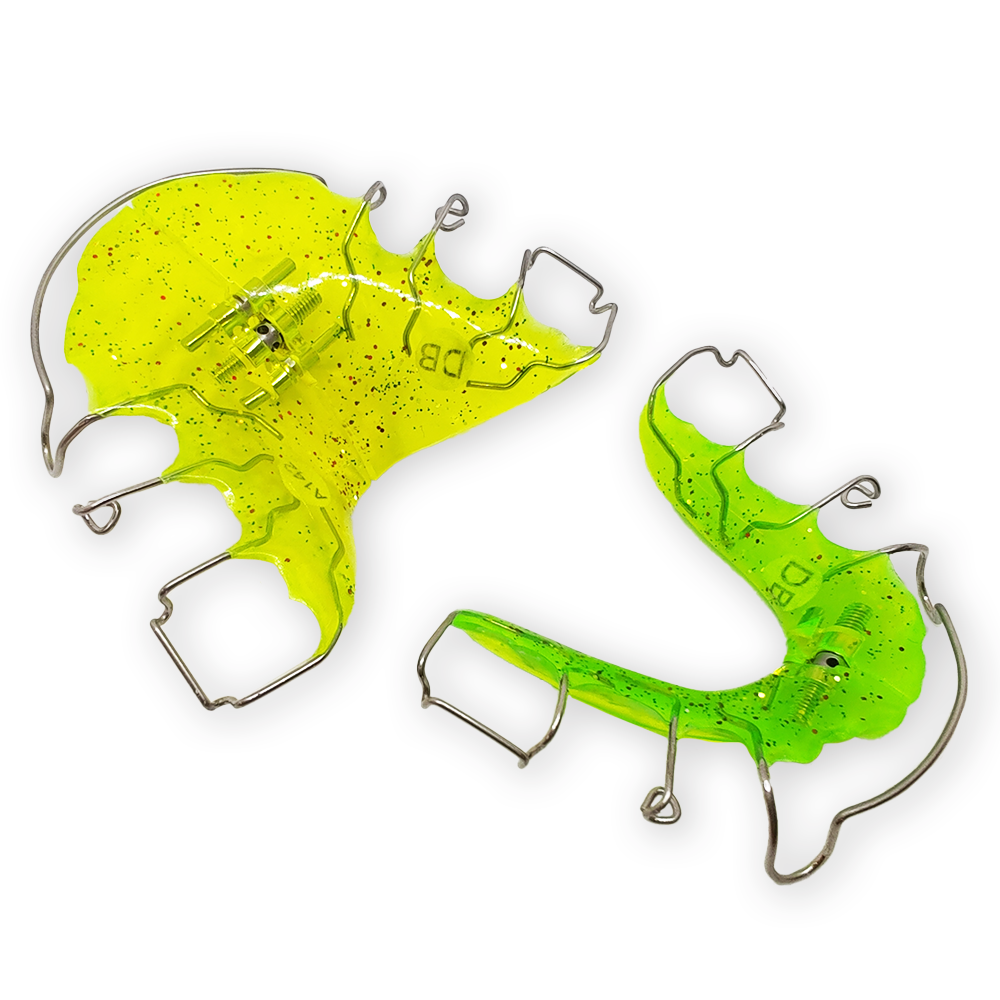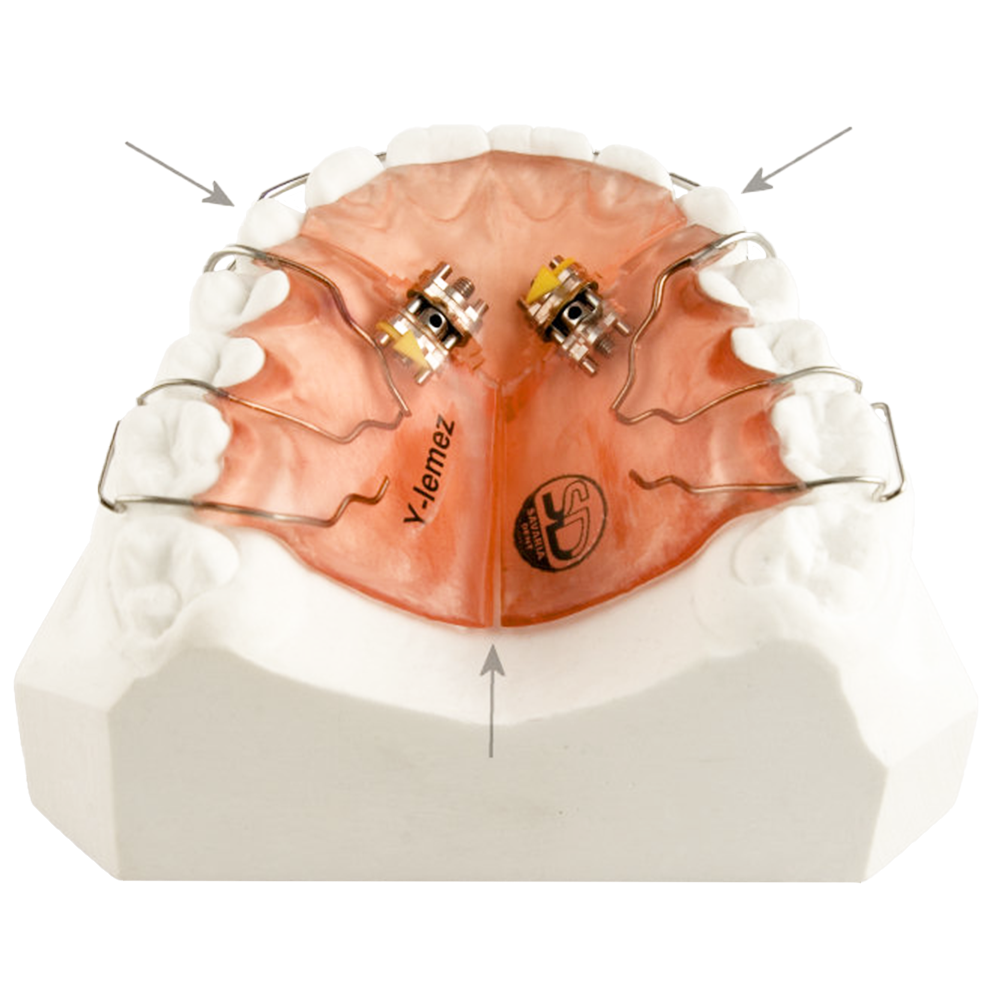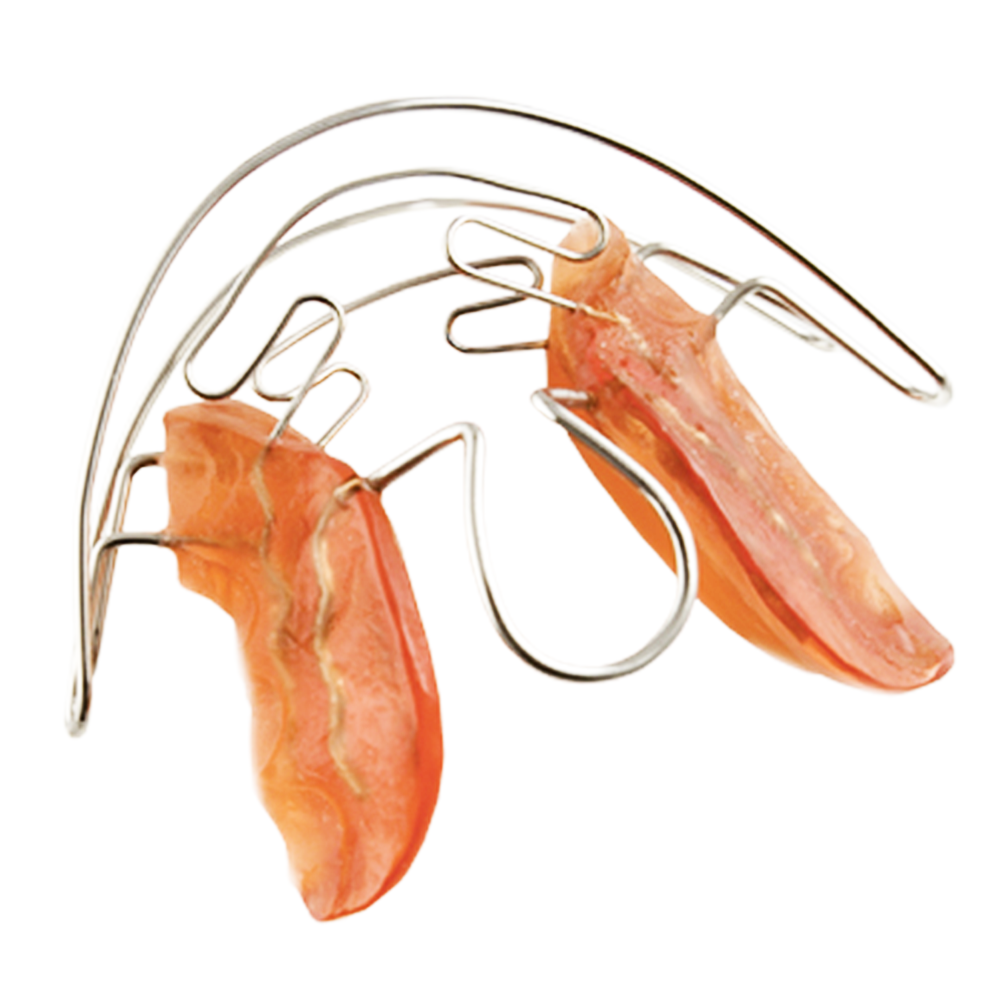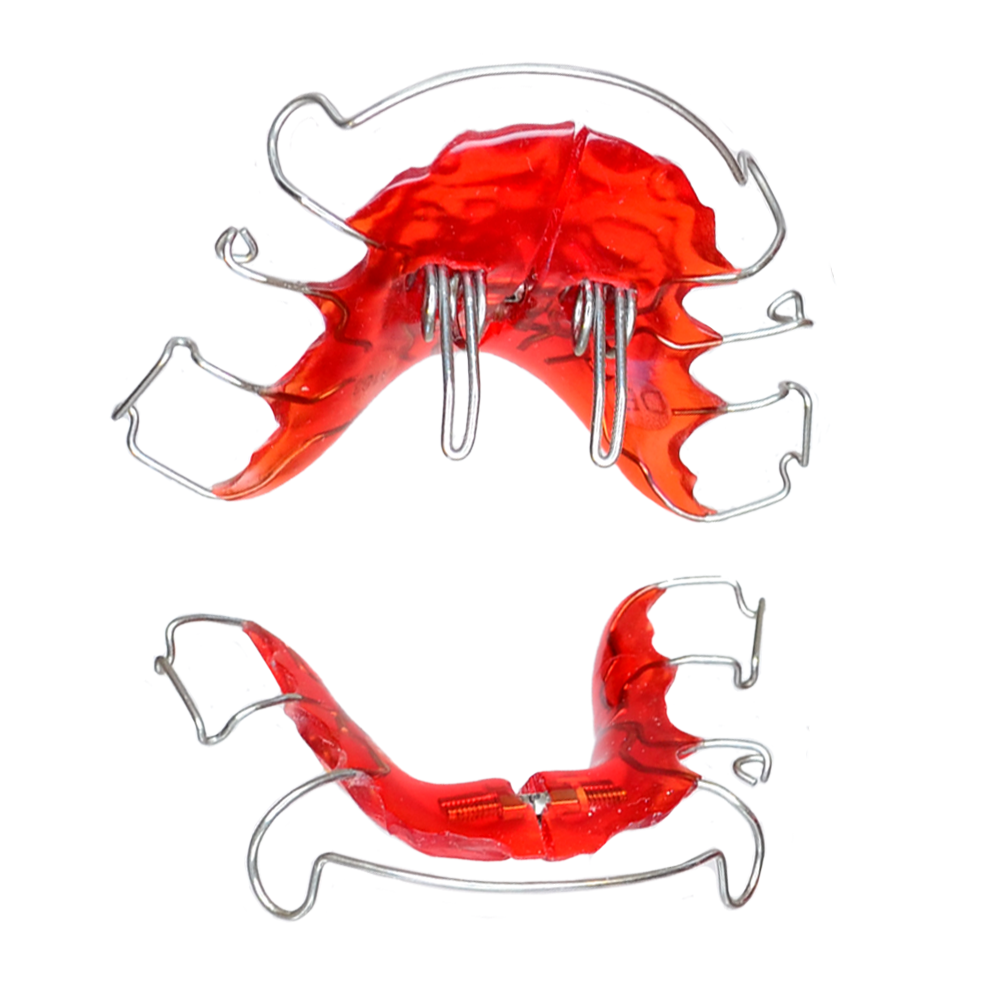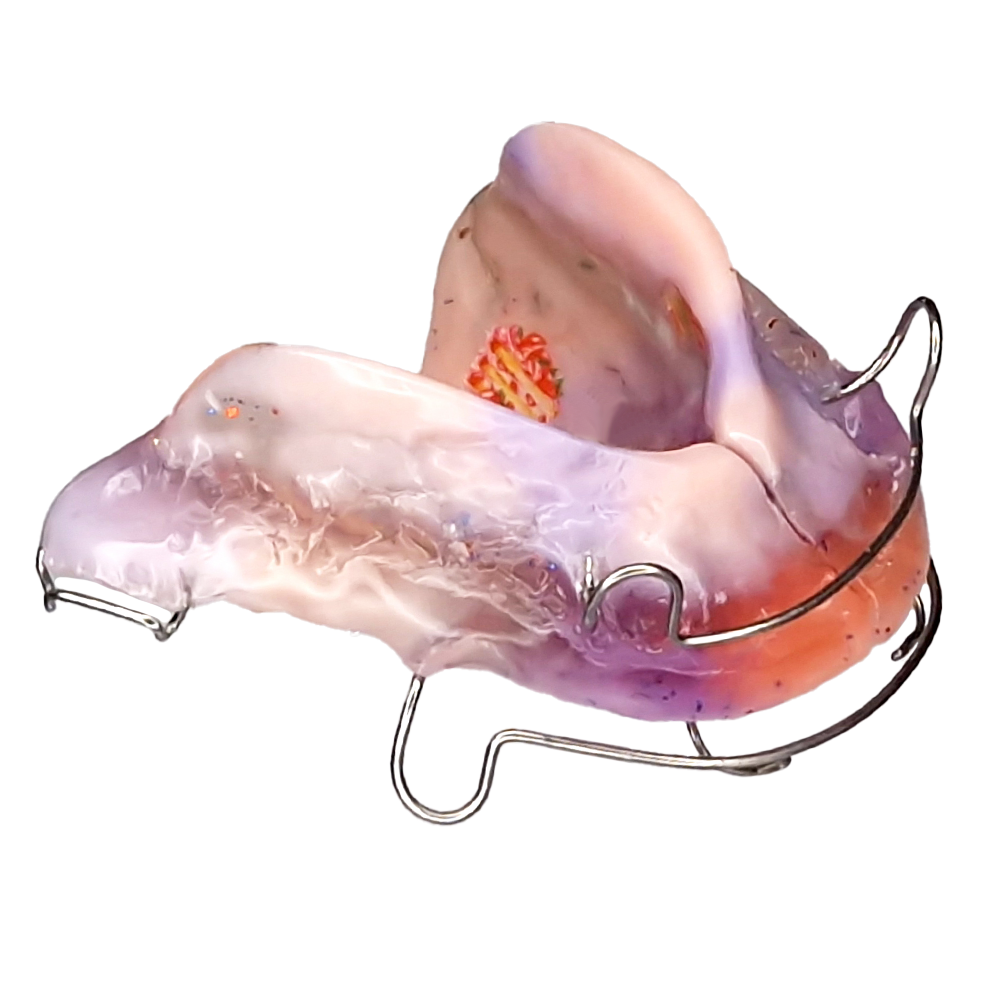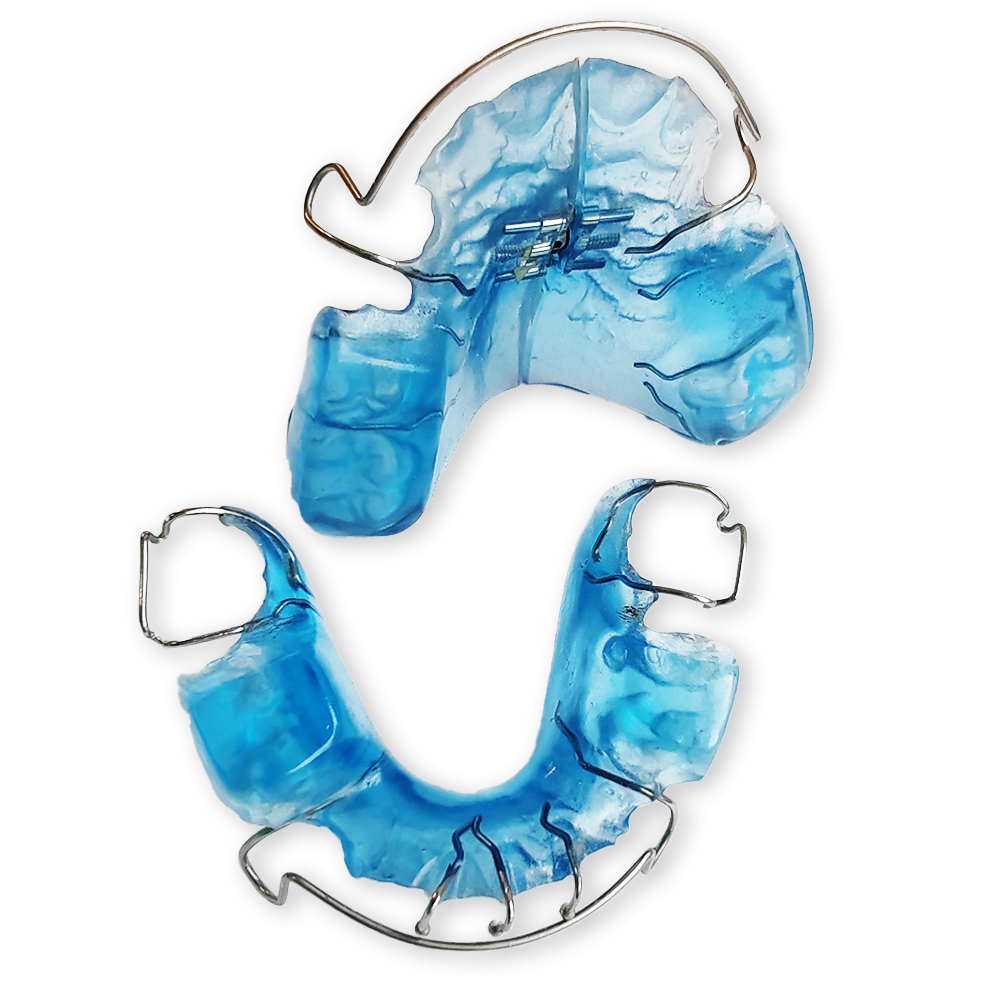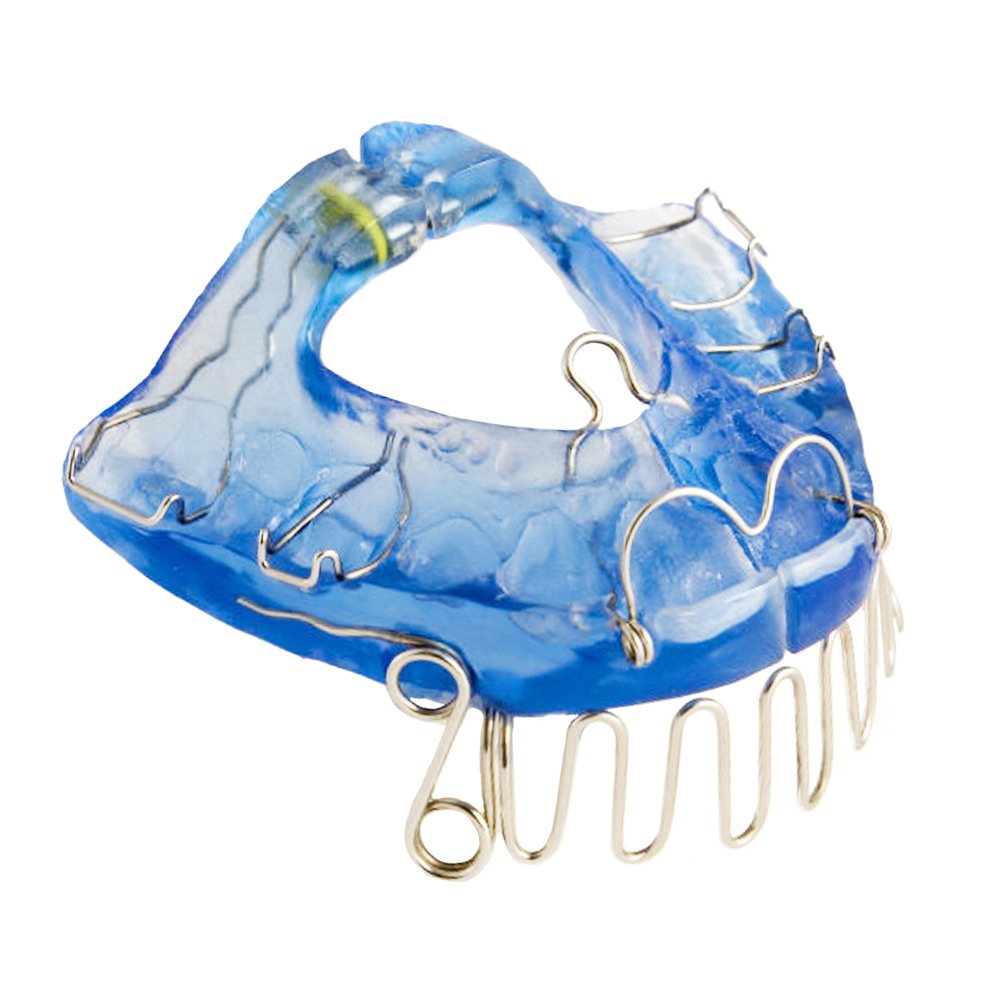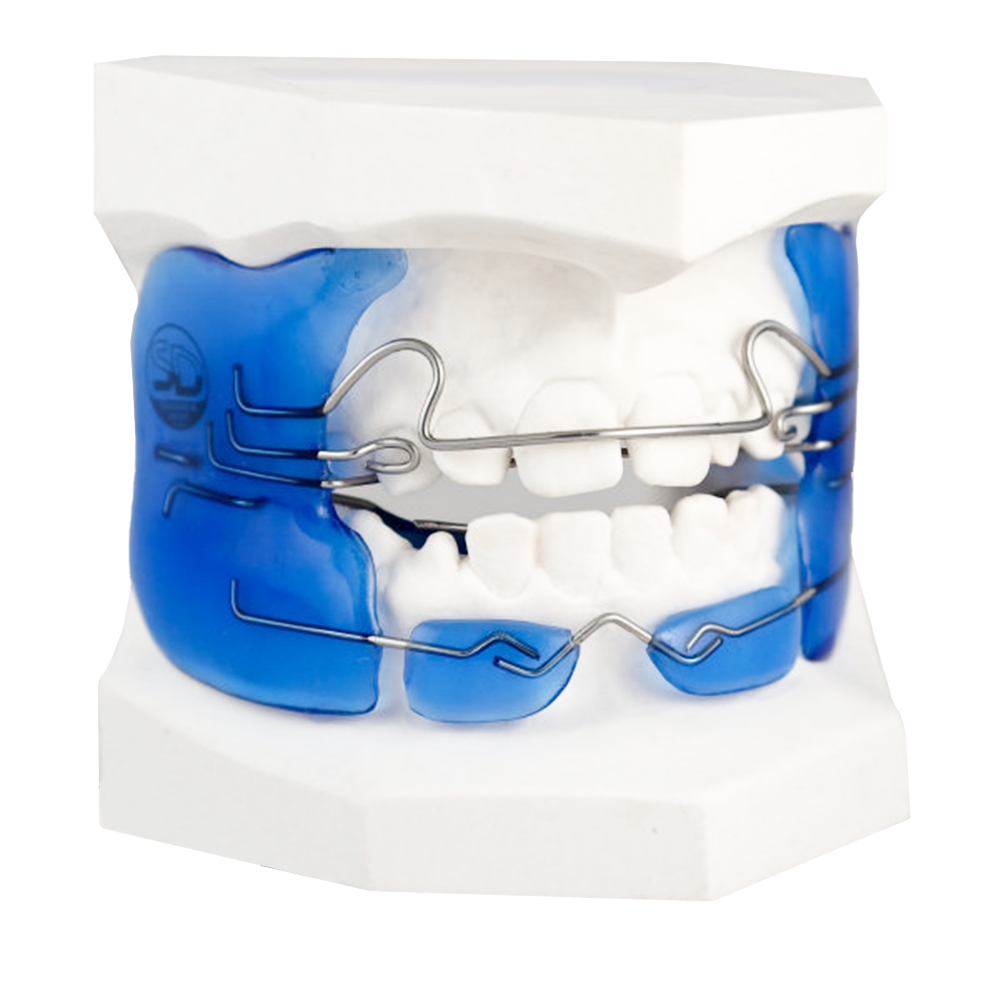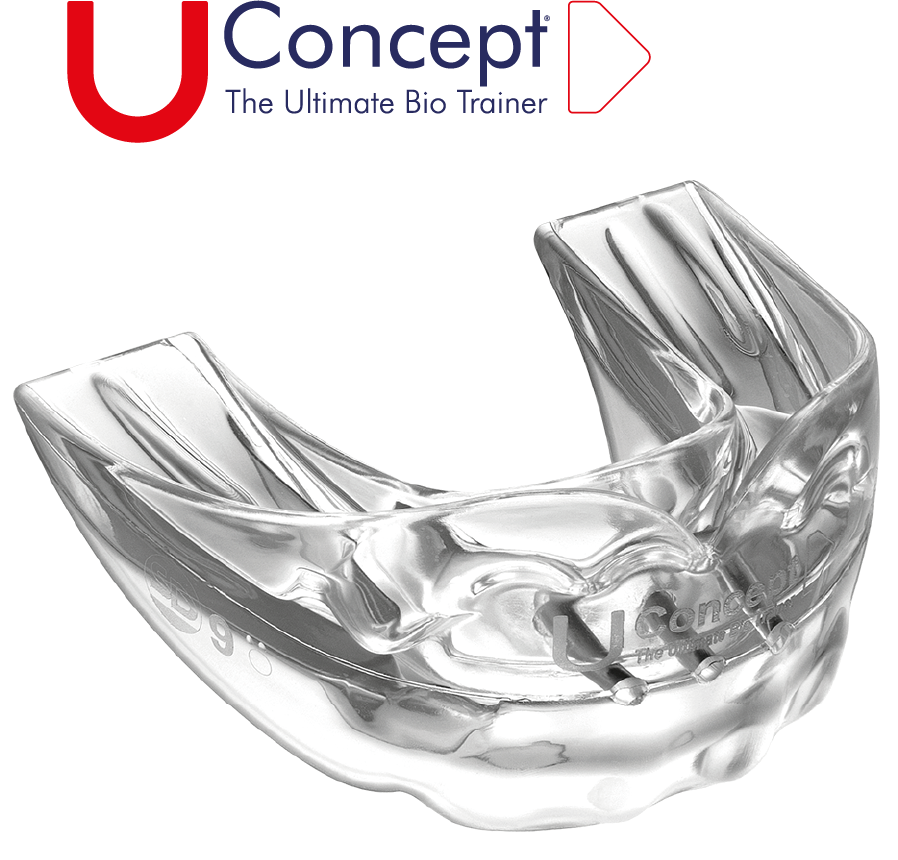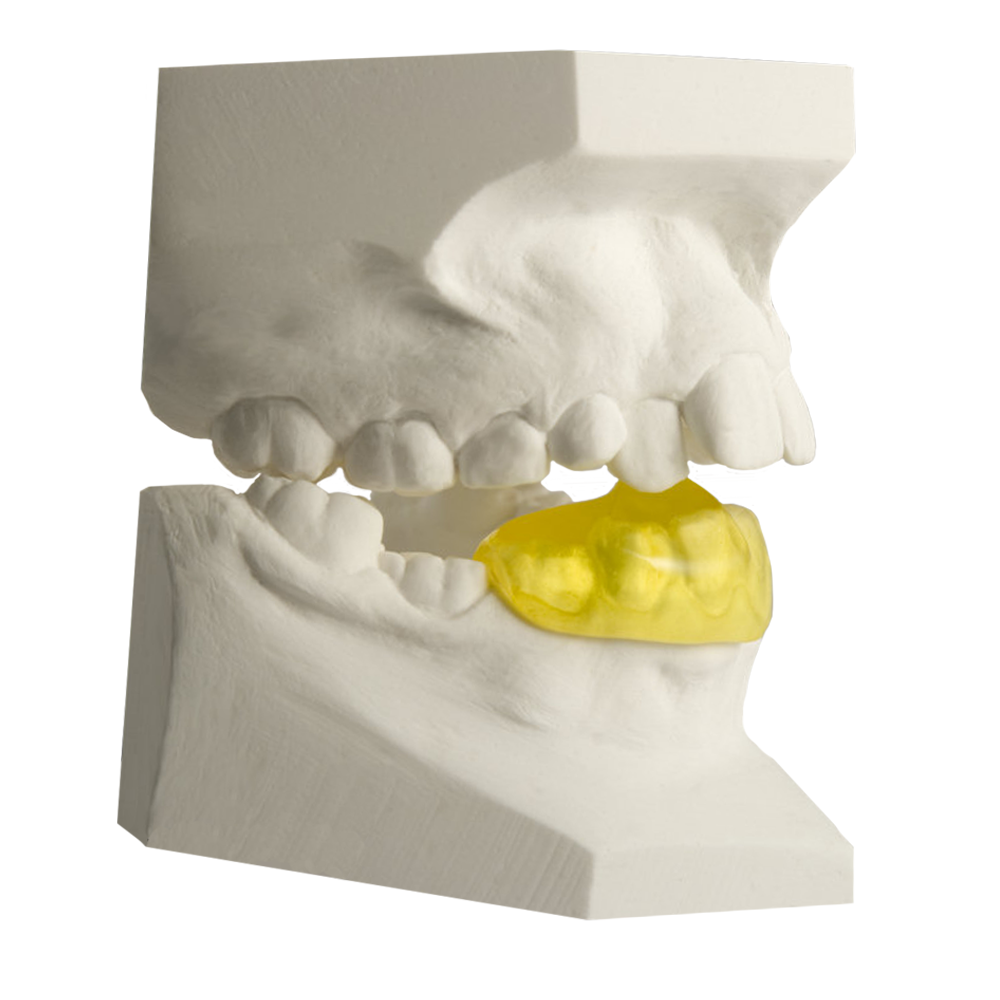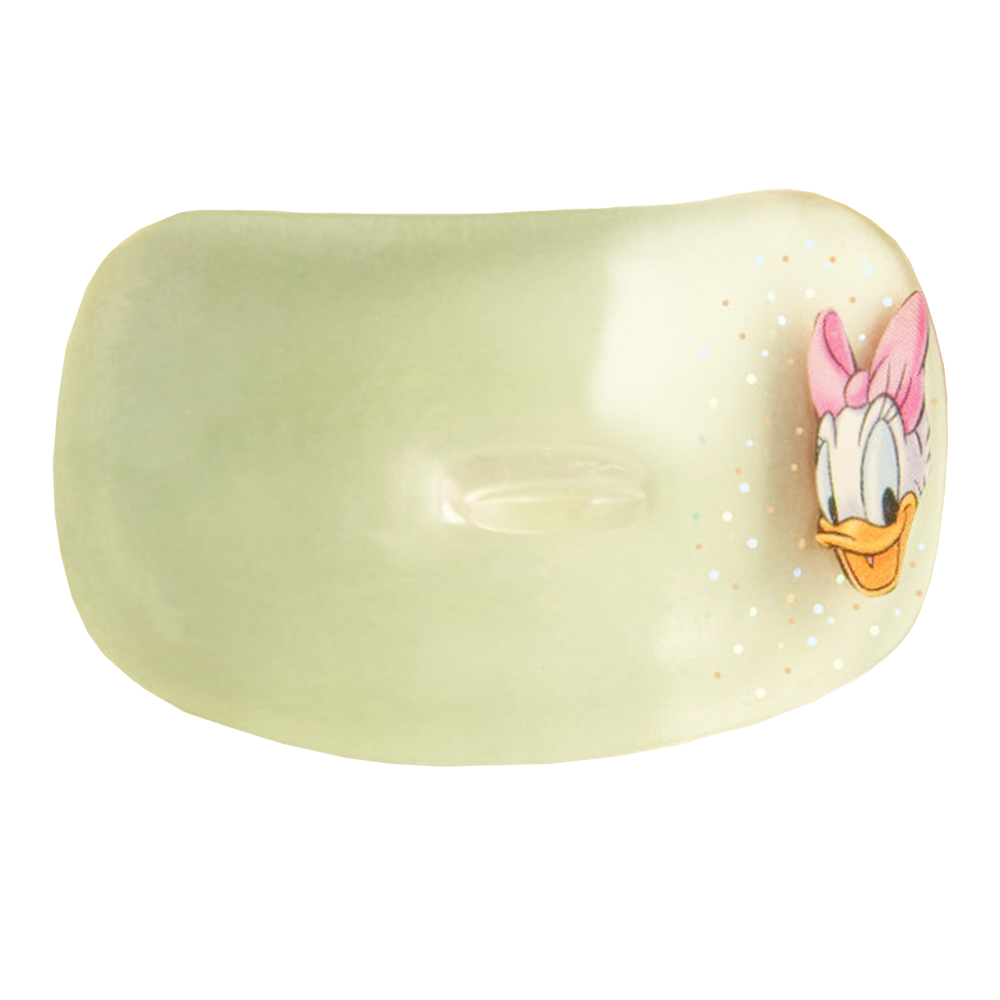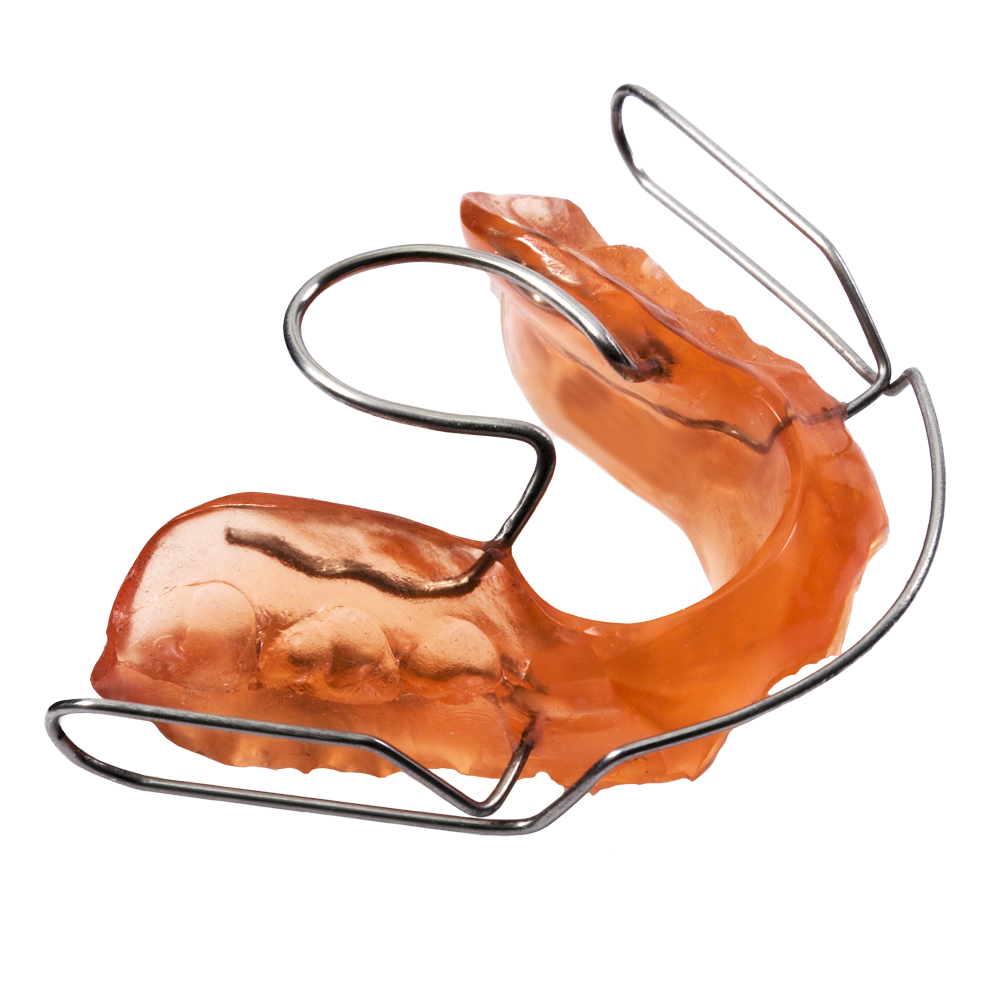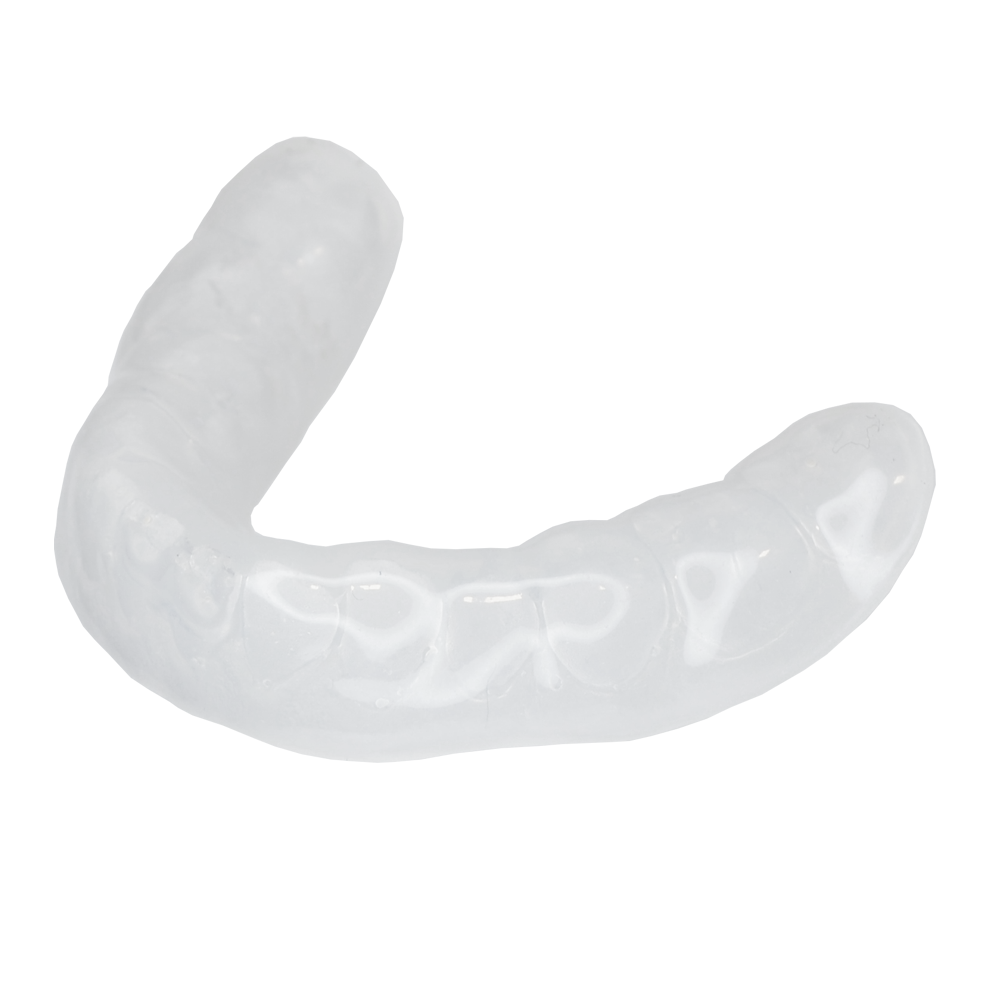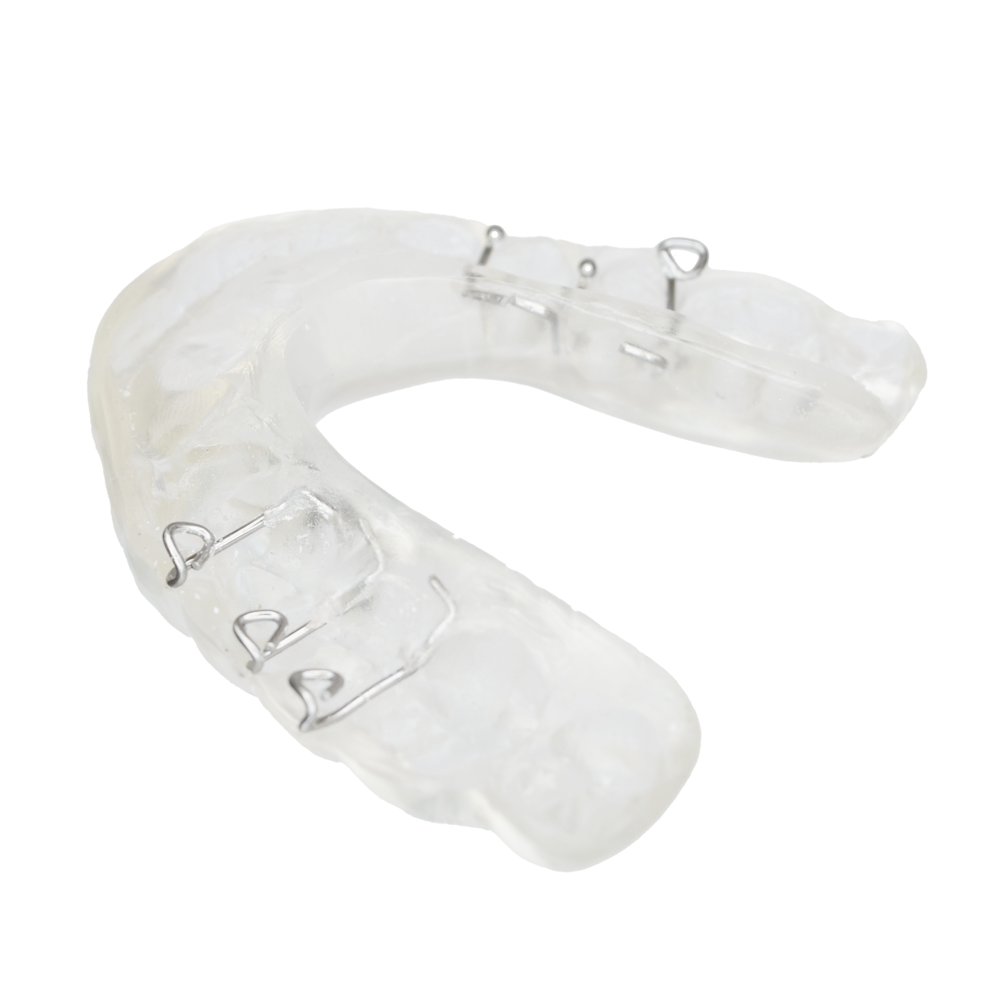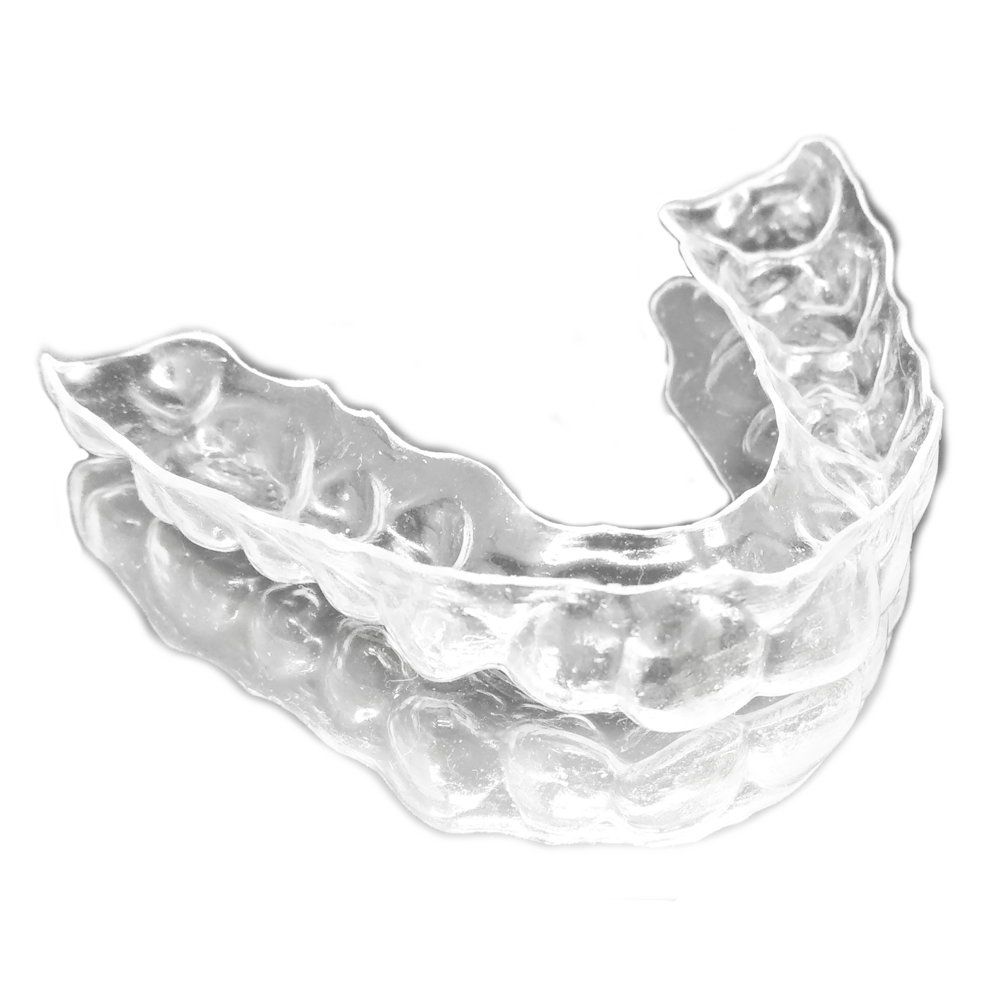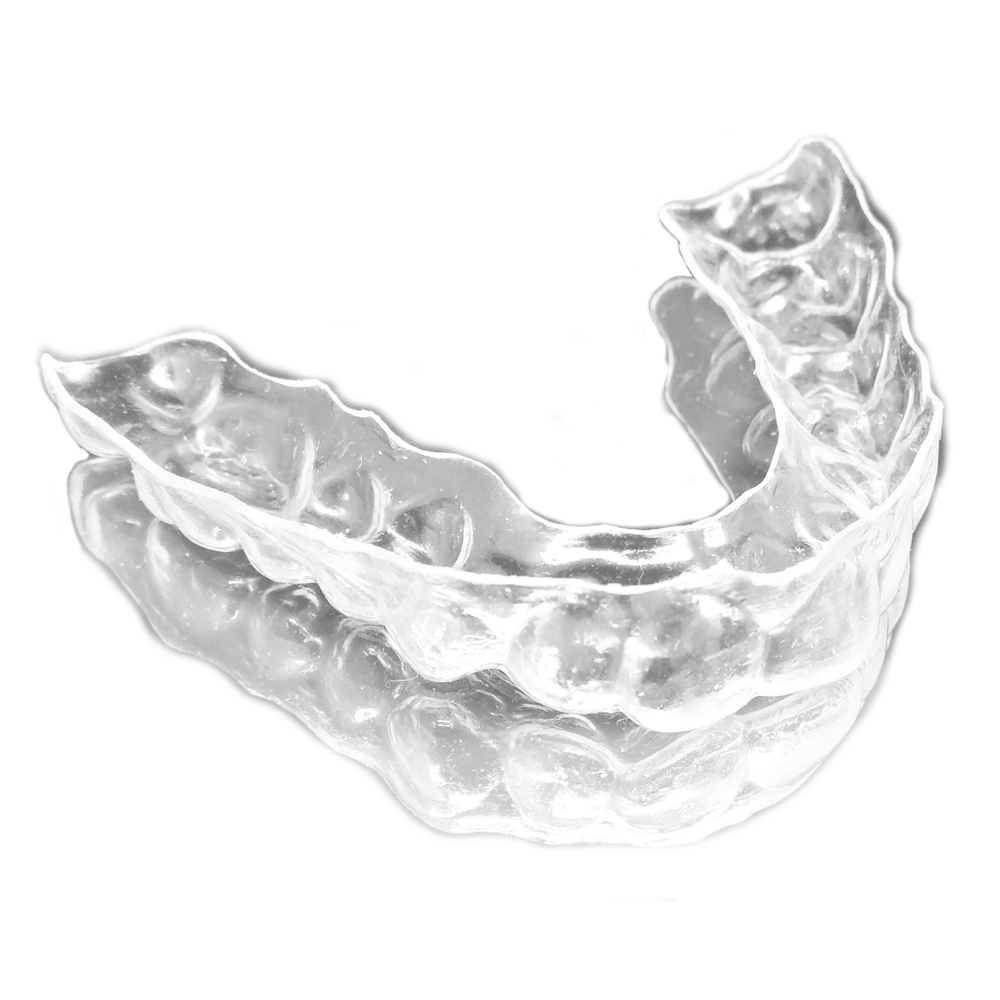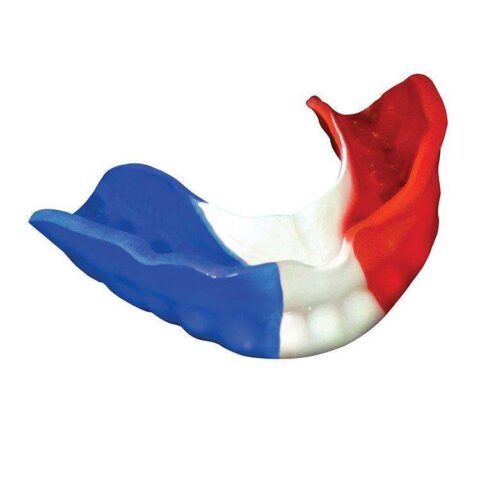Removable Appliances
Simple plate, Hawley plate, Hawley retainer
Appliances that extend over a jawbone, mainly for the treatment of dental anomalies.
They have two lateral acrylic blocks resting on the canines, the lateral teeth are only touched on their oral surface. They have a Bimler labial arch on the upper and lower labial surface, and loop springs or split wire supports on the cingulum of the lower and upper front teeth. The two acrylate blocks are connected by Coffin springs.
Activation: by activating the Coffin spring, the appliance is adjusted according to the expansion of the dental arch. Differential activation of the labial arches and the loop springs allows the anterior teeth to be moved, protrusion, retraction, rotation. By adjusting the acrylate, we can control the movement of the teeth, and we can also adjust the appliance extended into the interocclusal space according to Harvold.
Wear time: 10-12 hours per day for one to two years.
It consists of an upper and a lower simple plate, with two large double helix finger springs ("snake teeth") pointing towards the tongue from the palatal anterior surface of the upper plate. The lingual surface of the lower plate is formed with a groove corresponding to the two finger springs, so that when clenched, the "snake teeth" position the mandible sagittally and transversely.
Preparation: on the basis of a construction bite on plaster models.
Activation: as with the plates, the pre-bite can be somewhat enhanced by pre-setting the "snake teeth".
The patient bites down on the device, or when they close their jaws, a forced movement is made through the teeth. This is counteracted by a reflex mechanism originating from the root canal of the teeth, so the masticatory muscles are activated and the mandible is reflexively pushed into the position corresponding to the construct bite. The articular head thus leaves its resting position, a gap is created between the head and the condyle and this triggers an increased and corresponding growth of the head. This "jumping the bite" effect works for all construction bite devices, typically all activators. The maxilla is counteracted by a retrusion of the maxillary arch and a posterior change in the direction of maxillary growth.
It is similar to the double front guide plate, but here the forward guidance is provided by the inclined design of the side guide plates of the lower and upper plate. When biting, adequate space must be provided for the lateral guide acrylate blocks. If the bite becomes very open at the front, it is advisable to use a tongue barrier.
Bimaxillary devices, mostly for the treatment of distal bite.
Preparation: they are based on models and a construction bite, optional springs, frontal arches, possibly staples should be provided, although the latter reduce the kinetic effect. The acrylate block design should also be provided. By inserting an expansion screw, we can adjust our device to match the expanding tooth arches.
Activation: can be done by means of cutting out and activating the frontal arches or springs, and can be padded with a self-bonding material in the mouth.
Wear time: 10-12 hours per day for one to two years.
Bimaxillary or also known as functional appliances, which cover both jaws.
They can be used in mixed dentition, possibly in mixed dentition.
Preparation: an adequate impression, including the bend and the frenulum, is required! If necessary, raise the edges of the impression channel.
Wearing time: 20 hours a day for years.
No activation is required, except presetting if needed.
Made of acrylate, based on impression and construction bite. The lower front teeth are fixed with cement. Used only for crossbites on one or possibly two anterior teeth.
If there are other abnormalities, it is advisable to choose a different device.
Do not use it for more than a month.
The retention splint is made at the end of the orthodontic treatment, so that the newly formed position of the teeth is maintained in the future. The final phase of orthodontic treatment is called the retention phase.
Osamu appliances are soft-hard braces for a full arch. Flexible material covers the vestibular and lingual tooth contour, the alveolar mucosa. The entire structure is reinforced by a polycarbonate foil. The double-layer material provides enhanced comfort and durability, allowing the natural positioning of the arch in the occlusion.
A customised device for effective protection of teeth during sports.
It can be made using a vacuum moulding technique or 3D printing, after digital or traditional impression taking.
